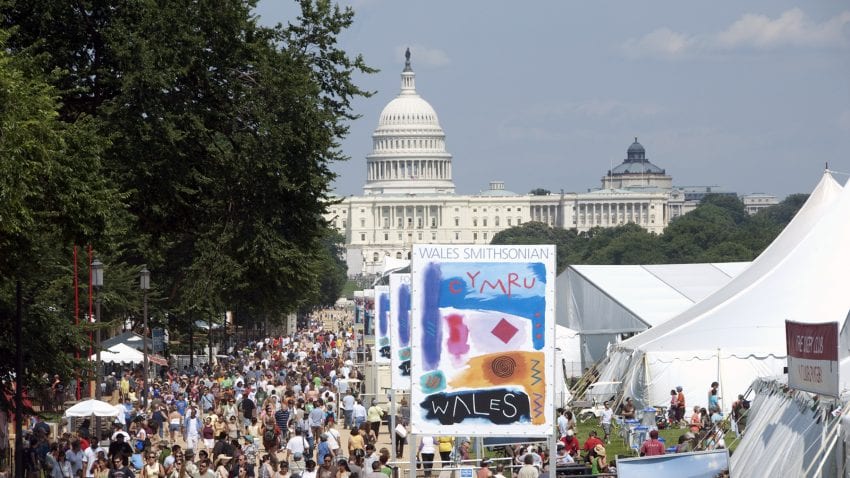
We spent Monday at the Smithsonian Center for Folklife and Cultural Heritage with two meetings, one about the Folkways Recording Label and the other about the Folklife Festival. Every summer since 1967 the Smithsonian has put on a roughly two week long festival on what they call “living culture”. The festival began as a festival celebrating specifically American folklife but expanded to a more global view. Each year the festival focuses on the cultures of a couple of regions or countries; or on a specific theme that can tie cultures together.
Our first meeting of the day was to discuss the recording label however a curator for the festival happened to be around and talked to us about his experiences. Jim Deutsch is a curator for the festival and what struck me most when talking to him was hearing about his journey to the position he is in. He told us that he has had over 60 (!) jobs in his life ranging from Forest Ranger in Alaska to Monorail operator at Disney. I’ve really enjoyed hearing about the career journeys of different people we’ve spoken to because most of them have not followed a straight path and have changed their minds several times throughout their life. Since I have absolutely no idea what I want to do with my life, this gives me a lot of hope.
He also explained to us the definition of Folklife, which to be honest, I was a little confused about. Folk is often confused or used synonymously with “untrained” which is completely untrue. In fact, folk artists are highly trained, often learning through an apprenticeship with an older master craftsperson. This confusion is the reason that folk art often isn’t as esteemed as other forms of art, and something the festival works to combat.
Our second meeting was specifically about the folklife festival and was incredibly interesting. The government shutdown greatly impacted last year’s festival causing it to shrink from its normal size of about 10 days to just about a day and a half. The people from the organization that we were talking to were obviously frustrated about having to cut back so much but also showed us all the ways that they’ve achieved the mission of the festival through videos, articles and social media outside of the normal festival reach. The theme of last year’s festival was the preservation of DC music and the power of music for social change. Over the course, we’ve learned a lot about the separation between the community in DC that are primarily concerned with the federal government, and the actual local community of DC. The separation of these two communities has led to a lot of inequality so I was very impressed that this global festival, funded by the federal government, was putting the spotlight on the local community of DC. One of my favorite things they showed us was a new interactive map that they are creating (it isn’t out yet), of important cultural moments or places in DC. The map has stars on important places and each star plays a video or audio recording. For example, one star played chants from the women’s march while another had a video from a previous festival of a speech and land acknowledgment by a member of the Piscataway Tribe, the native community to the DC area.
During this meeting, we met with a panel of about 6 people; it was the most diverse panel we have met with on the trip which was awesome to see. Our main contact was Sojin Kim, a curator for the festival. One of the things we’ve noticed at other federally funded organizations is their inability to take big risks for fear of having their funding cut or provoking controversy. For the entirety of this meeting, however, it seemed as though the festival was able to take risks and did not experience any censoring from the federal government. One of my classmates asked about this and Sojin explained that because their festival is not on permanent display the way a museum is, they are able to take more risks and discuss controversial topics in a way that the Smithsonian museums and other federally funded agencies are not able to. I found this very interesting because it was something I really had not considered. The festival reaches over a million visitors each year, meaning that its impact is very large and it is in the unique position of not having to worry as much about federal censorship.
The Smithsonian Center for Folklife and Cultural Heritage is a lesser-known part of the Smithsonian organization so I had no idea what to expect going in. I really enjoyed this site visit and hearing about the organization’s goals of celebrating the diversity of global, national and local cultures. It was especially cool to see an organization with such a large platform and reach using that platform to promote and celebrate the local music culture.
Works Cited
“Smithsonian Folklife Festival.” Smithsonian Folklife Festival, 10 Dec. 2019, festival.si.edu/.
“Smithsonian Folklife Festival Staff.” Smithsonian Folklife Festival, festival.si.edu/about-us/staff/smithsonian.
